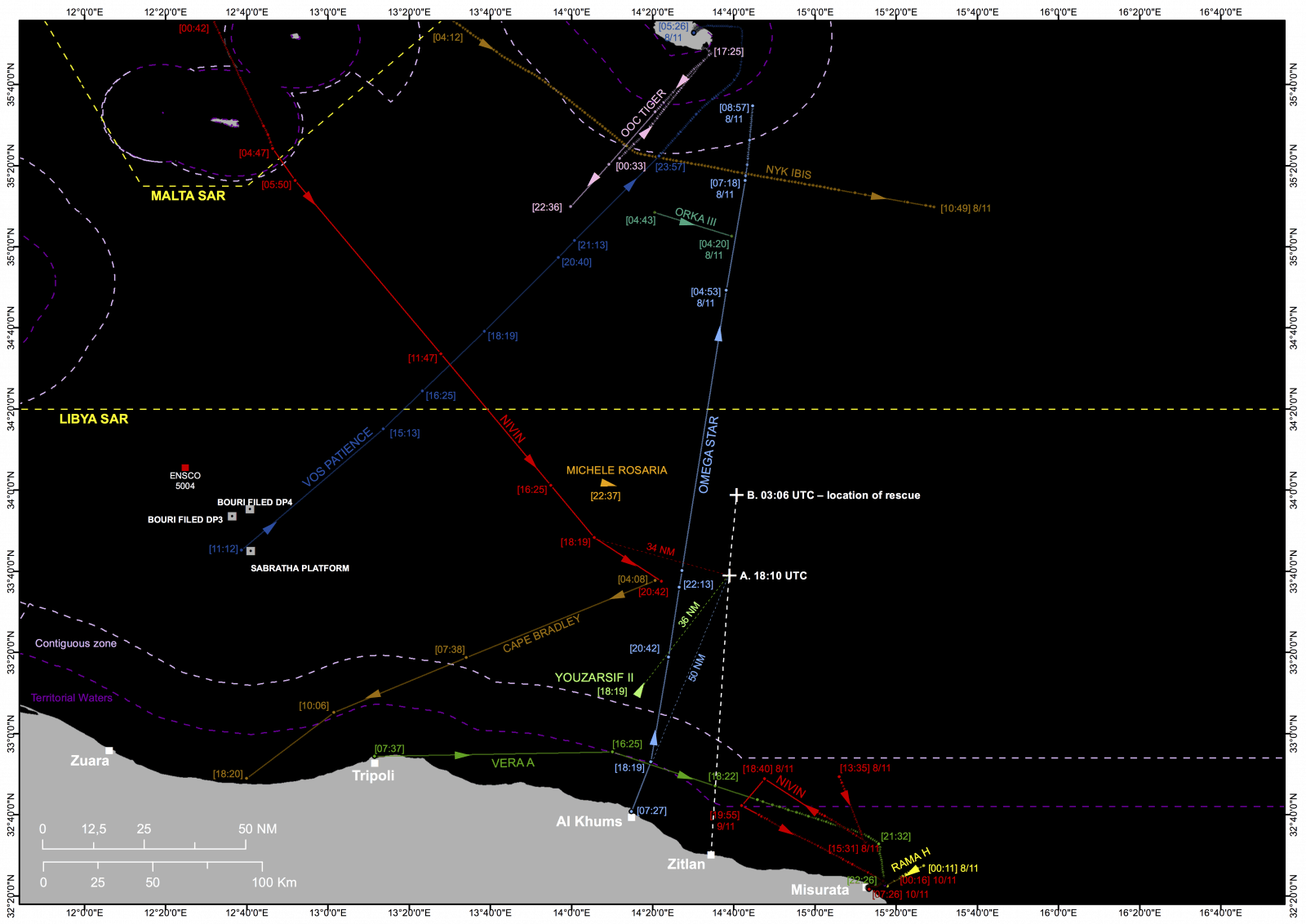I.49 Privatised Push-Back of the Nivin
Forensic Oceanography

Date of Incident
1 Nov 2018
Location
Central Mediterranean
Forums
Legal Process, United Nations
Commissioned By
Self-Initiated
Five months after Italy began to close its ports to migrants rescued at sea, a vessel carrying 93 people was spotted in the southern Mediterranean. The Italian and Libyan Coast Guards enlisted a private merchant ship to rescue the migrants and forcefully return them to Libya. Using tracking data and testimonies, Forensic Oceanography exposed a new mode of privatised border security.
I.32 Sea Watch vs the Libyan Coastguard
With Forensic Oceanography
Date of Incident
6 Nov 2017
Location
Mediterranean Sea
Forums
Legal Process, Exhibition
Commissioned By
Self-Initiated
When the Libyan coastguard interrupted a rescue operation by the NGO Sea Watch, at least twenty migrants lost their lives, and more were ‘pulled back’ to inhumane detention in Libya.
Forensic Oceanography shone a light on the practices of a coastguard funded and trained by the Italian government.
I.31 The Seizure of the Iuventa
With Forensic Oceanography
Date of Incident
2 Aug 2017
Location
Mediterranean Sea
Forums
Legal Process, Exhibition
Commissioned By
Self-Initiated
The Iuventa has rescued over ten thousand people from the Mediterranean since it began operating in 2016.
When the vessel was impounded by Italian authorities under suspicion of collusion with people smugglers, we used video evidence and meteorological data to refute the allegations.
I.17 Death By Rescue: The lethal effects of non-assistance at sea
Forensic Oceanography
Date of Incident
12 Apr 2015 - 18 Apr 2015
Location
Mediterranean Sea
Forums
Exhibition, Human Rights Report
Commissioned By
Self-Initiated
Changing EU policies toward the rescue of migrants resulted in over a thousand deaths in the Mediterranean in the space of one week.
Working with survivors and available shipping data, we recreated the incidents and explored the consequences of making rescue vessels out of commercial ships.
I.4 The Left-to-Die Boat
Forensic Oceanography
Date of Incident
27 Mar 2011 - 10 Apr 2011
Location
Mediterranean Sea
Forums
Legal Process, Exhibition
Commissioned By
Self-Initiated
A migrants’ boat was left drifting for two weeks in NATO-monitored waters, its presence known to the Italian coastguard and other nearby vessels. Sixty-three people died.
Using an array of sensing technologies—thermal cameras, radar, and tracking—Forensic Oceanography mapped the path of the boat.